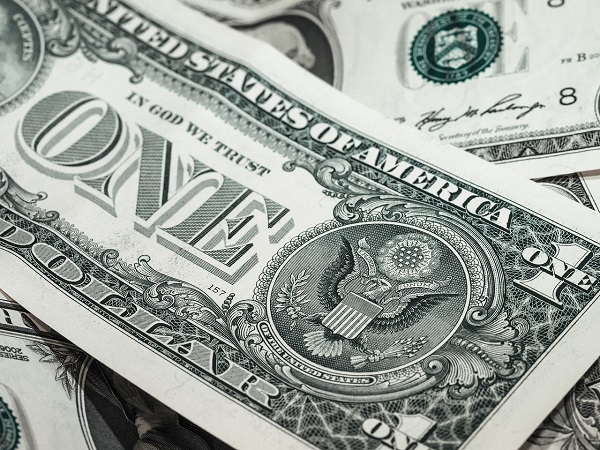By Vusuthando Percyvil Dube
The United States has emerged as the world’s preeminent economic power, with the U.S. dollar serving as the major global currency. This transformation is rooted in a complex interplay of domestic growth and international conflicts, notably three significant wars: the Spanish-American War, World War I, and World War II. Each of these conflicts played a crucial role in redefining America’s global standing and establishing the dollar’s prominence in international finance.
Historical Context: Early Isolationism and Domestic Growth
In its early years, the United States was largely isolationist, with leaders like George Washington advocating for minimal involvement in foreign affairs. The nation focused on domestic expansion, driven by territorial acquisitions and economic growth. Starting from a mere 2% of global GDP in 1820, the U.S. underwent a remarkable transformation, fueled by the Industrial Revolution and the post-Civil War economic boom. By the late 19th century, America had become the world’s leading manufacturer, surpassing Britain and positioning itself as a formidable economic power.
Yet, despite this economic expansion, America lacked global ambition until the late 19th century when the call for a more significant international presence began to resonate among policymakers. The pivotal moment arrived with the Spanish-American War in 1898, which marked the beginning of America’s imperial pursuits and the initial steps toward global dominance.
The Spanish-American War: A Catalyst for Change
The Spanish-American War was triggered by a multitude of factors, including American support for Cuban independence and the controversial sinking of the USS Maine. The victory over Spain marked the United States’ first major military engagement beyond its borders and resulted in significant territorial acquisitions, including Puerto Rico, Guam, and the Philippines. This expansion not only enhanced America’s geopolitical influence but also facilitated the establishment of military bases and coaling stations across the Caribbean and the Pacific.
The war showcased the United States as an emerging military power and catalyzed its shift toward internationalism. By the turn of the 20th century, America’s territories expanded dramatically, and with a robust navy, the nation demonstrated its capability to protect its interests abroad.
World War I: Establishing Economic and Diplomatic Leadership
The United States maintained a policy of neutrality during the early years of World War I, with President Woodrow Wilson advocating for peace and diplomacy. However, growing threats from German submarines and the intercepted Zimmerman Telegram compelled the U.S. to join the conflict in 1917. Despite initial reluctance, the U.S. entry turned the tide in favour of the Allies.
Post-war negotiations positioned the U.S. as a primary architect of the global peace framework, with Wilson proposing the creation of the League of Nations. While the U.S. Senate ultimately rejected entry into the League, the war solidified the dollar’s status in international trade, as European economies were left devastated, and the U.S. became the world’s greatest creditor. By the end of World War I, the dollar had begun to replace the British pound as the dominant currency for international transactions.
World War II: The Dollar as the Global Currency
The U.S.’s transition to full military engagement during World War II, ignited by Japan’s attack on Pearl Harbor in December 1941, further cemented its role as a global superpower. The war effort mobilized the American economy, leading to unprecedented industrial growth. The U.S. economy doubled in size between 1939 and 1945, while Europe and Japan faced catastrophic economic decline.
Upon victory in 1945, the United States was not only the dominant military force but also held the world’s most valuable currency. Through initiatives like the Bretton Woods Conference, which established the framework for international economic cooperation, the dollar became the anchor currency for the global economy, fixed to gold. This established a monetary order that placed the U.S. at the centre of international finance and trade.
The Postwar Era: Building a New Economic Order
In the aftermath of World War II, the United States sought to solidify its leadership role in global affairs. Through initiatives such as the Marshall Plan, which provided financial aid to rebuild war-torn Europe, and forming NATO, America manoeuvred to prevent Soviet expansion and secure its interests. The creation of international institutions like the International Monetary Fund (IMF) and the World Bank further integrated the U.S. dollar into the global financial system.
The stability of the dollar was vital as countries began to peg their currencies to it, leading to its status as the primary reserve currency globally. As the U.S. continued to cultivate alliances based on mutual economic and military interests, the dollar’s dominance became intrinsic to international trade, finance, and political influence.
Contemporary Challenges and the Future of the U.S. Dollar
Today, the United States faces numerous challenges, including economic inequality, domestic political divisions, and the rise of alternative currencies amidst shifting geopolitics, notably with China’s growing economic influence. Recent administrations have debated the role of the U.S. in global affairs, balancing international leadership with domestic priorities.
Despite these challenges, the U.S. still retains unmatched military capabilities, a vast network of alliances, and an influential role in international institutions. The resilience of the U.S. dollar as the world’s leading currency faces scrutiny, but until an alternative emerges that can rival its dominance, the dollar remains intertwined with global economic power and American legitimacy on the world stage.
The evolution of the U.S. dollar into the world’s primary economic currency reflects a significant historical trajectory marked by domestic expansion and global warfare. The Spanish-American War, World War I, and World War II each played a vital role in this transformation, enabling the United States to rise as a global power. As the geopolitical landscape continues to evolve, the legacy of these conflicts will profoundly shape the future of the U.S. dollar and America’s position in world affairs.
VOC News









